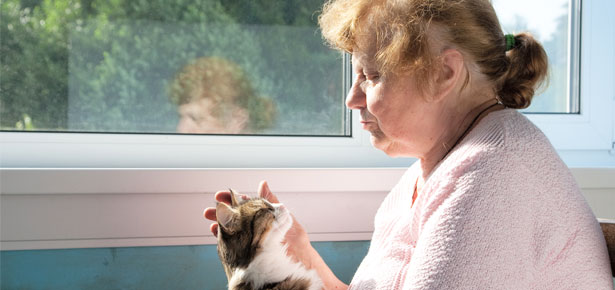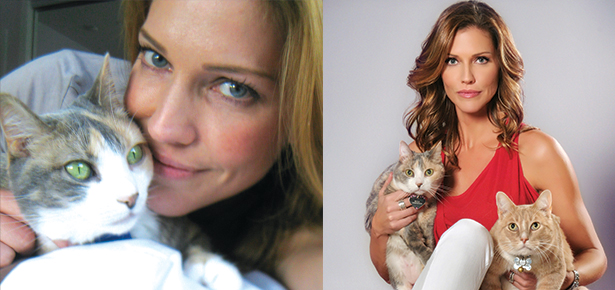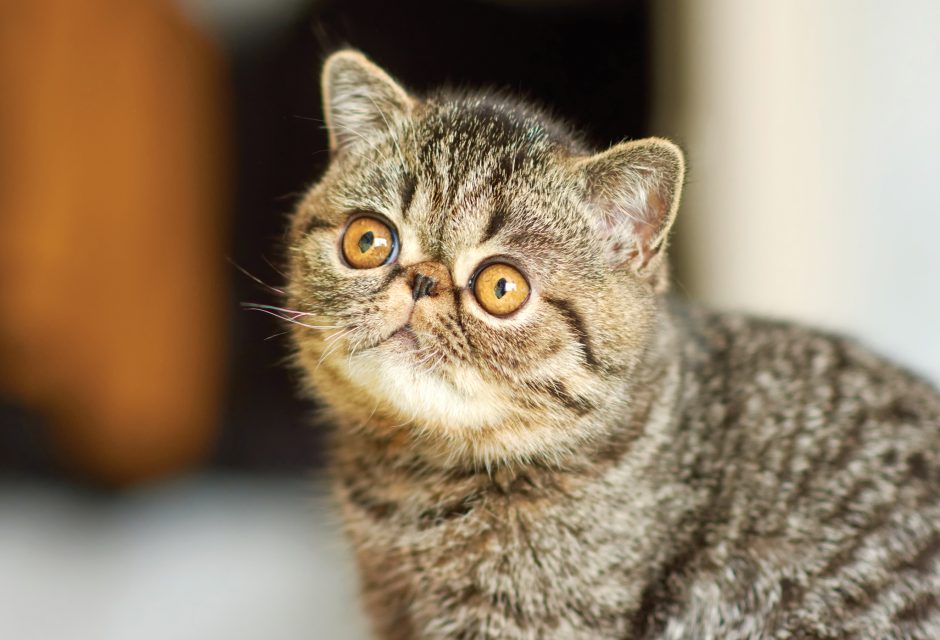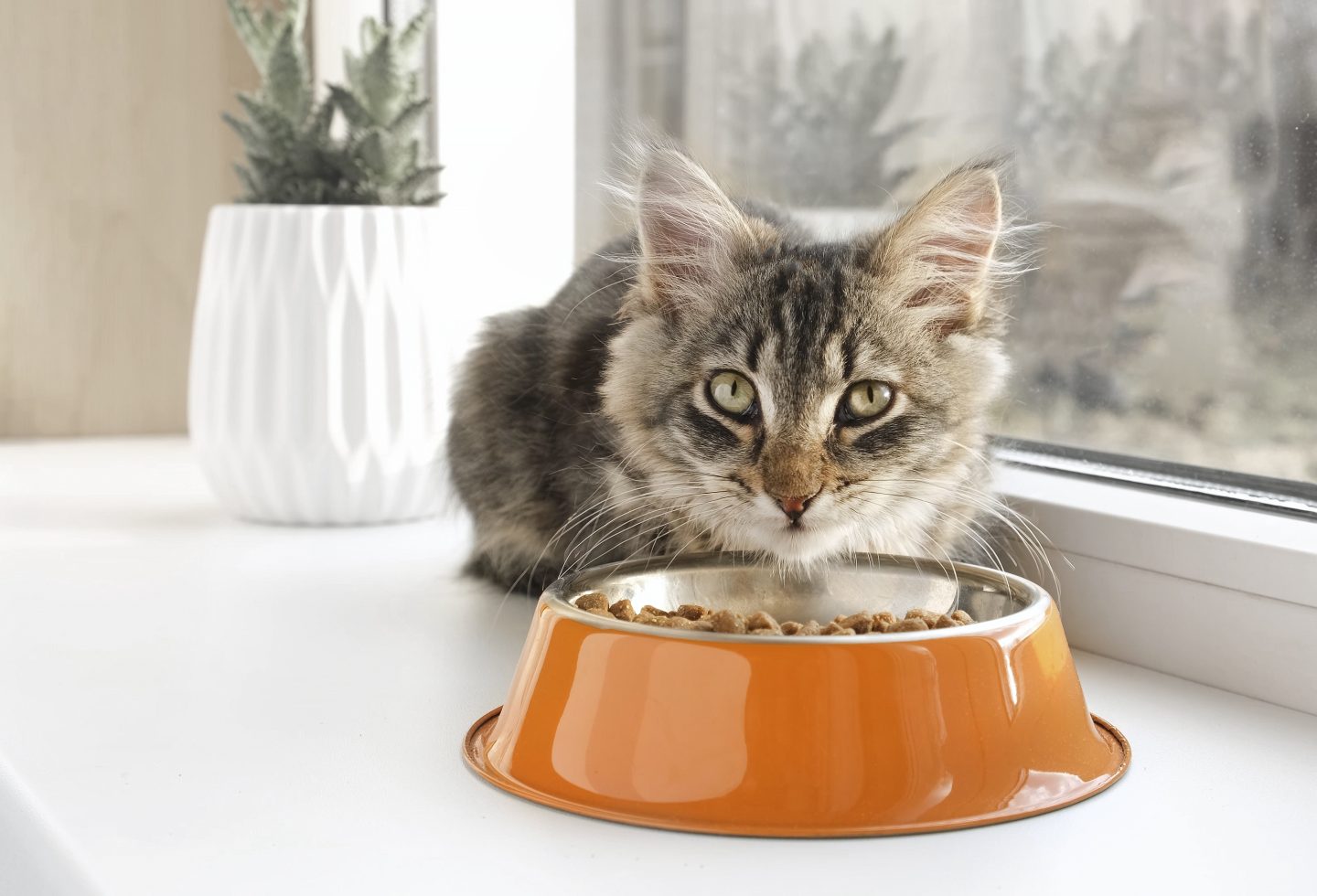

Get Your Whisper On! Feline Dining and Drinking Etiquette
Mieshelle Nagelschneider, aka The Cat Whisperer, Weighs in with Life Changing Advice re: Dining Etiquette
By: Mieshelle Nagelschneider, Cat Behaviourist, host of the TV show My Cat From Hell, and author of the cat behaviour science book, The Cat Whisperer
Last Updated:
The Case for Free-Feeding
In a multi-cat household, if you offer food to cats in one big communal cat food bowl or even several cat food bowls all within the same room, and feed them all at the same time, you will fail to address the cats’ territorial needs. The existence of only one location for food and a limited number of pathways to it could be enough to create the kind of tension at mealtime that leads to fighting and bullying. Some cats may end up unhappily hungry as others bully them out of the way. Food abundance and dispersion are easy but critical ways to keep space between your cats, allow them to time-share more efficiently, and keep them happy.
Free-feeding, which consists of keeping food available to the cats at all hours of night and day, preferably in several locations throughout the home, is another way. Why free-feed? Cats have small stomachs that empty out in a couple of hours. An empty stomach is no fun, especially if it’s empty for several hours. Cats in the wild and those allowed to set their own feeding schedules eat quite frequently—from nine to sixteen mouse-sized meals per day—and appear to have evolved to eat that way. Not surprisingly, cats who are fed only twice a day, during scheduled feedings, can become agitated, and they can get even more cranky if the food isn’t served on time. Their stomachs will be growling and their dinner conversations may be kind of grumpy (sometimes even hostile), causing them to take their unhappiness out on each other. Dominant cats will want to make sure everybody knows they’re in control and they are going to get the food first. Dominant cats who are concerned about the perceived scarcity of food resources may be so anxious about preserving their dominance that they intimidate lower-ranking cats not just at mealtimes but at other times of the day too.
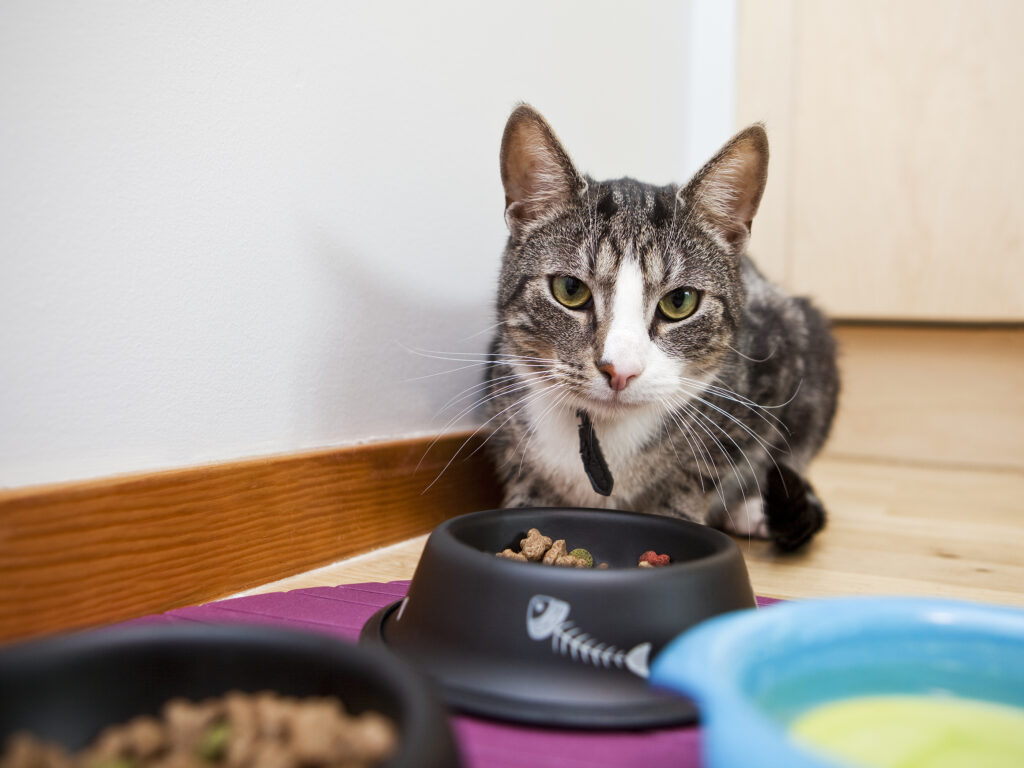
Photo: bigstock.com/gemenacom
Many people are totally unaware their cats are stressed about food.
Even a cat who doesn’t have to share food with other cats is happier when she can readily follow her body’s natural rhythms. Anytime a cat eats, she’s at her most content, with a more stable mood and emotional state. Many people are totally unaware their cats are stressed about food until they see the difference in their cats’ personalities after they begin either free-feeding the cats or providing them with more than two meals a day.
Cats fed on timed human schedules tend to be less cooperative and more aggressive than cats allowed to eat on their own schedules. In most cases, you don’t need to worry that free-fed cats will gain weight. In fact, I’ve seen obese cats lose weight once food was made readily available, because once they realized that there would always be enough food and there was no need to gobble it up all at once, they stopped overeating. Free-feeding may also reduce some cats’ tendency to bolt their food down and later regurgitate it.
If a cat is not able to regulate her food intake, however, I do not recommend free-feeding. You may create an obese cat. For these cats, a timed feeder that delivers food four or more times a day is ideal. You won’t be increasing the calorie allotment—just how often he is fed. However, for cats who can regulate their intake and for whom obesity is not an issue (75 to 90 percent of cats), I would go so far as to say that feeding them twice a day is inhumane.
Dispersal of food resources can have strikingly positive effects on the happiness and harmony of your feline household. Place food bowls in different locations throughout the home (not just in different areas of the kitchen or bathroom)—both for free-feeding and scheduled feedings. There should be as many food bowls as there are cats. Feeding cats together is a sure-fire way to start a behaviour problem. Experiment with placing bowls on different levels—some on the floor and some on tables or windowsills. A more timid cat may not feel comfortable eating on the floor.
Food puzzles are a great way to help prolong you cat’s feeding so he doesn’t gobble down all his food at once. Instead, he’ll have to work to get the food out of the puzzle, which also gives him the mental stimulation he needs.
Water, Water, Everywhere
Water is as important to cats’ health as it is to ours. Water helps to soften hard stools, digest and absorb nutrients from food, regulate body temperature, and flush waste. Cats can live for days without food, but bodily functions simply shut down if they lack sufficient water.
As with the food bowl, all it takes is one cat sitting next to the water bowl or on the pathway to it to intimidate another cat. So spread the water wealth.
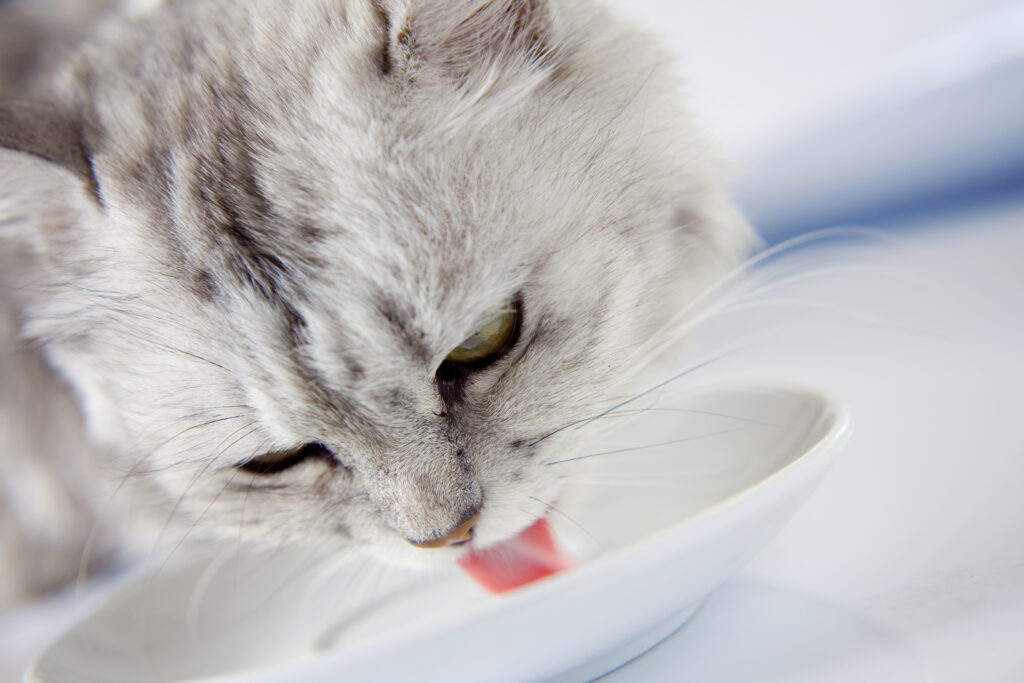
Photo: bigstock.com/alenkasm
If you’re concerned about your cat overeating by free-feeding, try several small meals a day vs. only two meals. There are timed-feeders on the market that can help achieve this, whether your cat eats wet or dry food.
Ever wonder why your cat prefers to drink out of your glass? Or from anywhere other than the water bowl next to his food? Instinctively, cats prefer to drink water that’s located away from their dead prey which, in nature, may contaminate their water with bacteria. To honour this survival instinct, separate their “dead prey”—which in this case is their store-bought food—from their water. Both food and water should also be placed in an area separate from your cats’ litter boxes.
To make water appealing, keep it fresh—I refill my cats’ water several times a day, and I recommend you do so, too, if your cat doesn’t drink enough. A bowl should either be wide or filled to the brim. Why? Because cat’s whiskers are very sensitive. They may use their paws to dip water out, and spill it on the floor, rather than push their whiskers against a narrow-brimmed or less-than-full bowl to drink from it.
Cats are drawn to running water so if your cat doesn’t seem to be drinking from his bowl, try a fountain. Cats are notorious for not drinking enough water, and these simple prescriptions can make it more likely that they will get what they need.
Excerpted from THE CAT WHISPERER by Mieshelle Nagelschneider. Copyright © 2013 by Mieshelle Nagelschneider. Excerpted by permission of Ballantine, a division of Random House, Inc. All rights reserved. No part of this excerpt may be reproduced or reprinted without permission in writing from the publisher.
Join the newsletter and never miss out on cat content again!
"*" indicates required fields
By clicking the arrow, you agree to our web Terms of Use and Privacy & Cookie Policy. Easy unsubscribe links are provided in every email.






